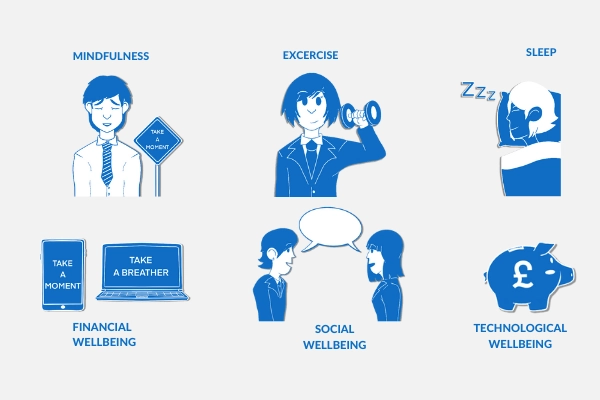What is Leadership Wellbeing and Burn-out?
Burn-out is now a recognised medical condition. The World Health Organisation (WHO) defines burn-out as:
“Burn-out is a syndrome conceptualized as resulting from chronic workplace stress that has not been successfully managed. It is characterized by three dimensions:
- feelings of energy depletion or exhaustion;
- increased mental distance from one’s job, or feelings of negativism or cynicism related to one’s job; and
- reduced professional efficacy.
Burn-out refers specifically to phenomena in the occupational context and should not be applied to describe experiences in other areas of life.”
Burn-out an “occupational phenomenon”: International Classification of Diseases
However, with the pandemic, remote working, and technology, it is impossible to distinguish between work-life and home-life. Burn-out should be redefined to include all aspects of life. It should encompass personal, physical, emotional, and mental, relationships, work, family, social and finances.
WHO also defines wellbeing as “a state of complete physical, mental and social wellbeing and not merely the absence of disease or infirmity”.
Factors contributing to Leadership Burn-out
Burn-out is a long-term emotional, physical, and mental exhaustion. Leadership burn-out is a common and frequent occurrence. Leaders typically work under pressure and have responsibilities for themselves and their teams. You are also accountable to stakeholders, including the board, customers, and shareholders. You may set expectations for yourself, which may be too high or extremely difficult to achieve. Other people may also have expectations of you, which could also put you under stress.
Leaders will often work around the clock. Most leaders have no clear distinction between work and home. You will probably spend more time on work-related activities than with your family and loved ones. Leaders sometimes battle with the guilt of spending too much time on work. You may miss crucial moments with your family and loved ones.
You will potentially have no hobbies or downtime. And are probably running on empty or near empty most of the time. Leaders such as yourself may have endless amounts of sleepless nights worrying about your organisation, your teams, projects, financials, customers etc. You may spend all your weekend reviewing documents and evenings planning. You are in a constant race organising the world of work.
Depending on the size of your organisation and your role, you can feel lonely. CEOs can be very lonely. Additionally, female and minority leaders can sometimes find themselves in isolation. Loneliness and isolation can lead to high-stress levels.
Leadership wellbeing is very important as the organisation as well as the leaders suffer if the leader is unwell. You are at your best and performs best if you are well. Avoiding burn-out is therefore necessary for your survival and that of your organisation. Understanding your stress levels, triggers and how you behave when you are under a lot of pressure is thus vital.
Burn-out signs you should look out for
The NHS list the following as symptoms of burn-out:
- feel overwhelmed
- have racing thoughts or difficulty concentrating
- be irritable
- feel constantly worried, anxious or scared
- feel a lack of self-confidence
- have trouble sleeping or feel tired all the time
- avoid things or people you are having problems with
- be eating more or less than usual
- drink or smoke more than usual
Six things to do to improve your wellbeing and avoid Leadership burn-out
Here are six things you can do to avoid burnout and to improve your wellbeing.

1. Mindfulness: meditation, give yourself space. Set some time aside for you. Take time out to reflect, detach and relax.
2. Sleep: aim to sleep for 8 hours, you will feel more alert and capable. You will recharge your battery, ready to take on your next set of challenges.
3. Exercise: Indulge in self-care, exercise your body and mind. Explore nature. Go out for walks, jogging or running. You can have breakthroughs and lightbulb moments when you are out and about.
4. Technological wellbeing: remove yourself and detach from technology. This is one of the best ways to switch off from work. Turn off your device. Have a separate work and personal phone. Lock away your work phone once you finish work. Focus on yourself.
5. Social wellbeing: stay social and have a support network around you. You need family, friends and a community that understand you and keep you grounded. Thus, it is important to have a good support network around you.
6. Financial wellbeing: plan, don’t let the financial impact of stress and anxiety on productivity and performance cost you.
Look after yourself first. Imagine you are on a flight, travelling with a little child. You are given a set of safety instructions. The emergency warning sign comes on to put on life jackets. You will have to put yours on first before you help the child. The same rules apply to you in business – look after your wellbeing, avoid burn-out. Only then will you be able to help others.

